Sometimes, something nice just falls into your lap. Often, you don’t see it coming and sometimes you don’t even realise you are onto a good thing until after the deal is done. Such was the case with a new project I’m about to start.
An e-mail popped up on my screen from a stranger. He said he realised he was never going to get around to doing-up a couple of guns he had been left and was giving up his shotgun certificate. Was I interested?
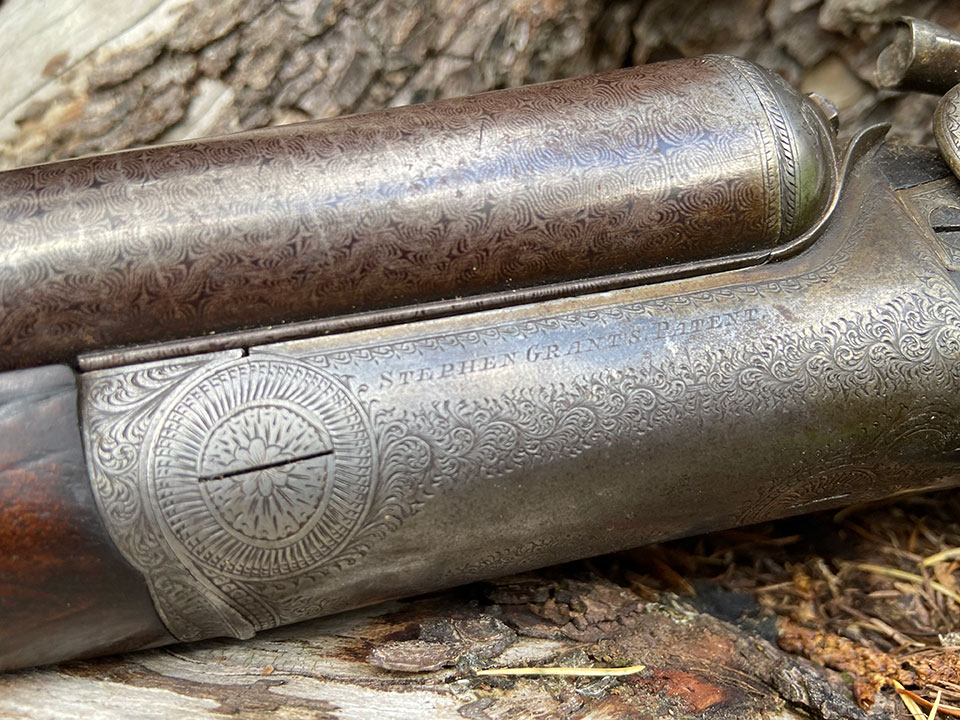
I noted the telephone number and made a call. The owner told me the guns had been in the family a long time and that the hammer gun used to hang on the wall in the sitting room when he was a child.
Unfortunately, he said, the hammers were broken. It didn’t sound too promising but I suggested he send me a couple of photographs and we could take things from there.
The next e-mail came, it contained a couple of full-length photos. One was a Stephen Grant hammer gun, the other a James Lang & Son rook rifle, converted from .300 Rook to .410 shotgun. Both looked dirty and neglected. Again, nothing to get excited about, I thought.
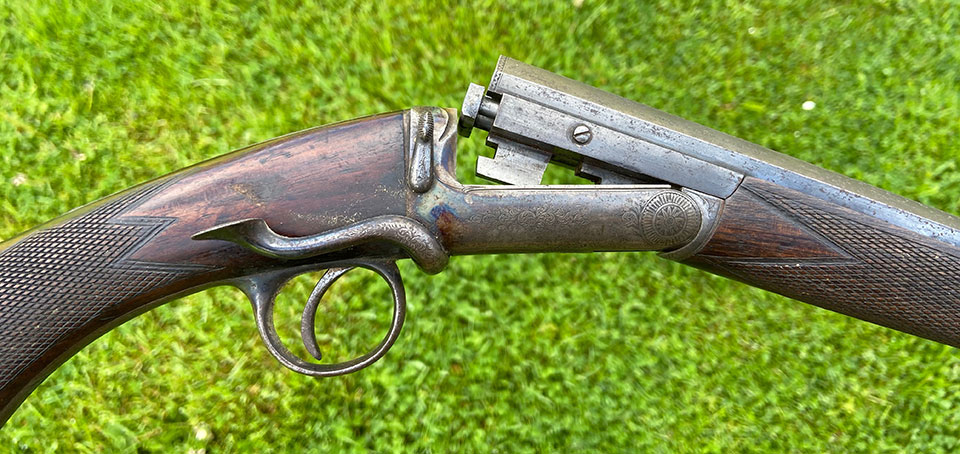
The Grant had both hammer spurs broken off and I assumed, if it had been a wall hanger for decades, it was likely a scrapper. Still, the owner didn’t want them and suggested he’d rather they went to someone who might be able to do something with them rather than give them to the police. So, I arranged transport and the guns duly arrived, both cased, in suitably derelict cases which appeared original to the guns.
First impressions were not good. They had that dry, dusty look that neglected guns have, light surface rusting on the barrels and caked-on crud everywhere. The wood was dull and dirty. Making assumptions for the worst, I took a look at the the barrels on the Grant first.
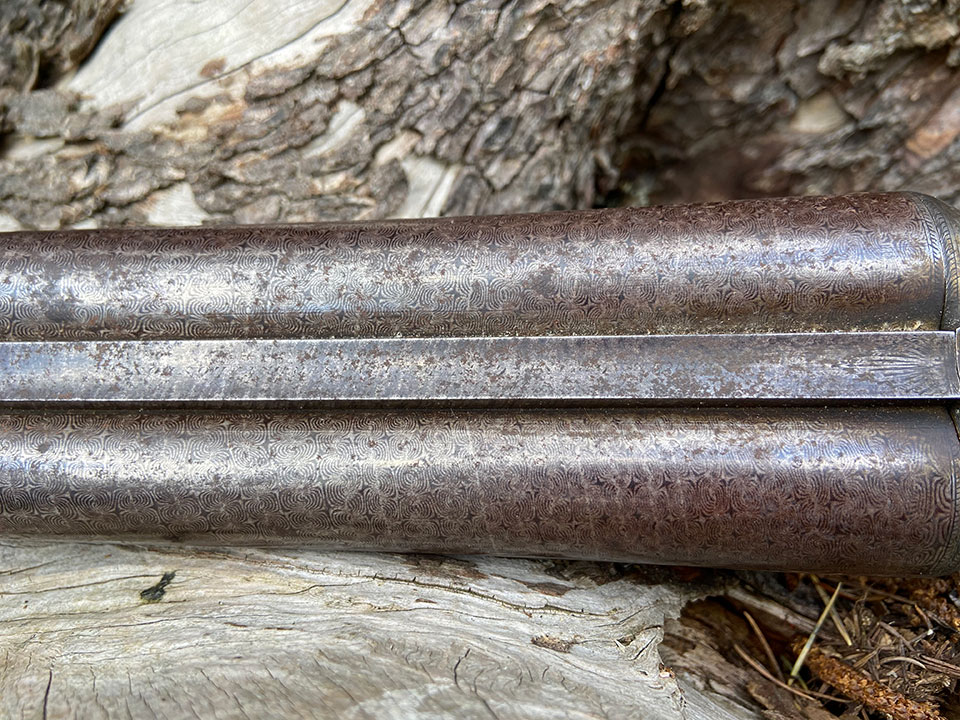
Though a smattering of light rust marred the outsides, the barrels were original and not re-browned nor overly worn of colour. The grubby appearance was neglect, not wear and tear. Inside, there were a couple of spiteful pits but not as many as I expected. I have seen and renovated much worse.
Still, I expected the ribs to be loose and dents and maybe bulges to feature. However, none of those anticipated issues arose. They rang like a bell and, apart from the light surface rust, were actually pretty good, with nitro re-proof marks and walls measuring 28 and 29 thou’ minimum.
So, on to locks and action. Though caked in dirt, much of it was hardened oil and dust, which would clean off. The engraving and the surface of the action and locks was actually, under the filth, pretty original, un-worn and un-spoiled. Barrels were ‘on-face’ and everything locked-up neatly as it should, with no gaps or evidence of repair.
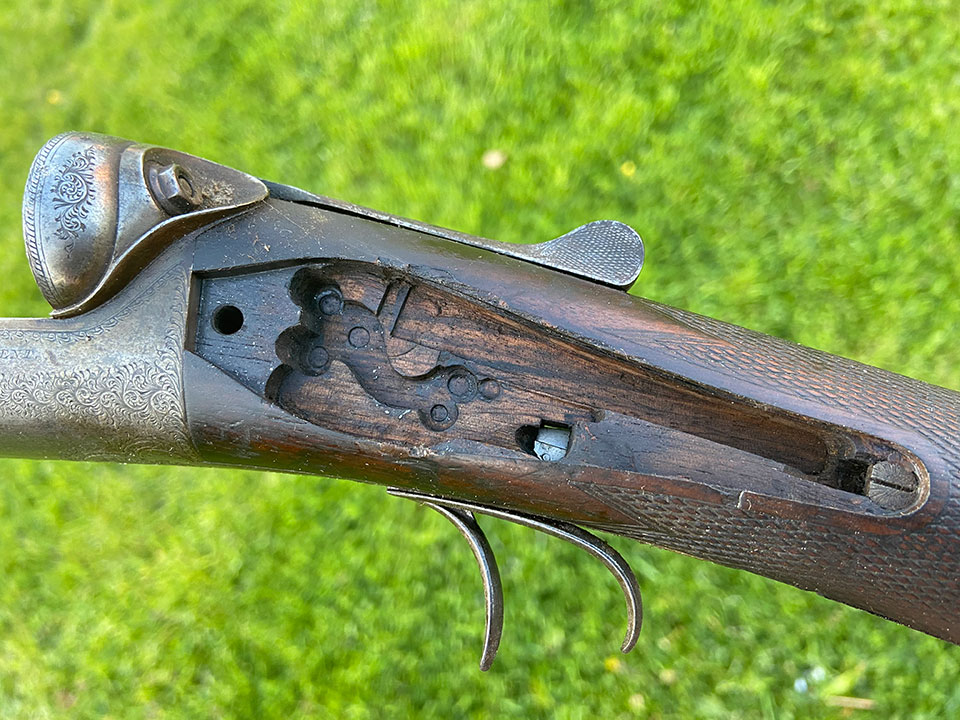
Starting to get a bit more hopeful, but still expecting to find a deal breaker somewhere, I inspected the wood carefully. Chequer was not badly worn and the wood was level with, or proud of, the metal everywhere the two materials met. Despite my expectations and fears, I could find no evidence of serious oil ingress or cracks to the wood of the stock or forend. Actually, apart from the surface grime, they were good.
Stripping the locks from the gun I found that, inside, the wood was still very clean and strong and the locks themselves were clean and sharp, with nice bright, polished mainsprings and crisp, hardened bridles.
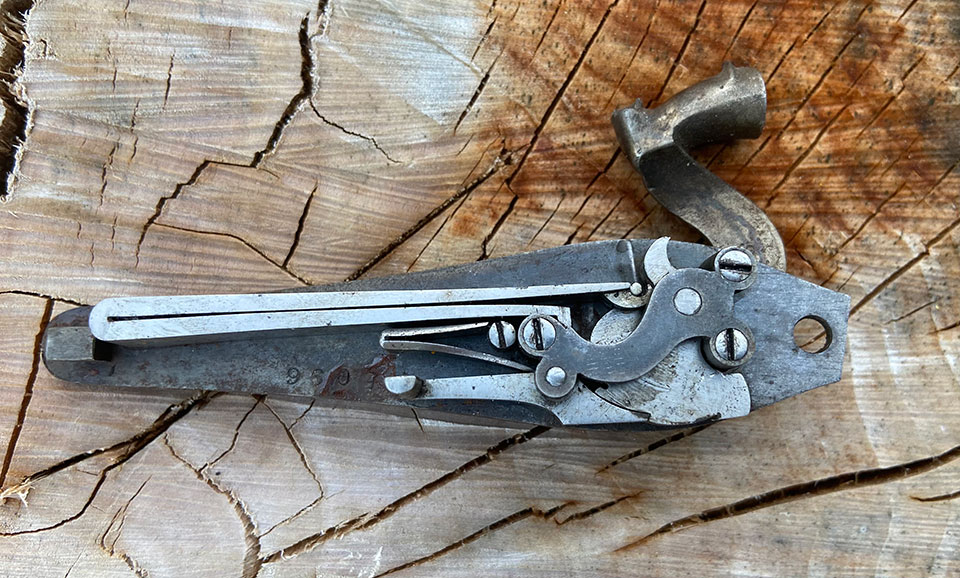
The broken hammers may have saved the gun from what may otherwise have been several decades of hard use. I suspect that after they were broken, the gun simply got put away, then hung on a wall.
Inspection did uncover one or two sins, it would be un-realistic to expect it to be flawless after such an unpromising start, despite my pleasant surprises. An attempt had been made to repair one of the broken hammer spurs.
Whoever tried was a bit of a klutz. In attempting to remove the lock plate he had prised it out with a sharp instrument and damaged the wood along its edges. I would guess that he then took the lock plate and shut it in a vice to hold it, while he bodged a repair.
Gunmakers line their vice jaws with lead, to protect the steel parts they grip. This chap had applied no such niceties and there are what appear to be vice marks marring the clean edges of the lock plate. The damage is cosmetic, but there.
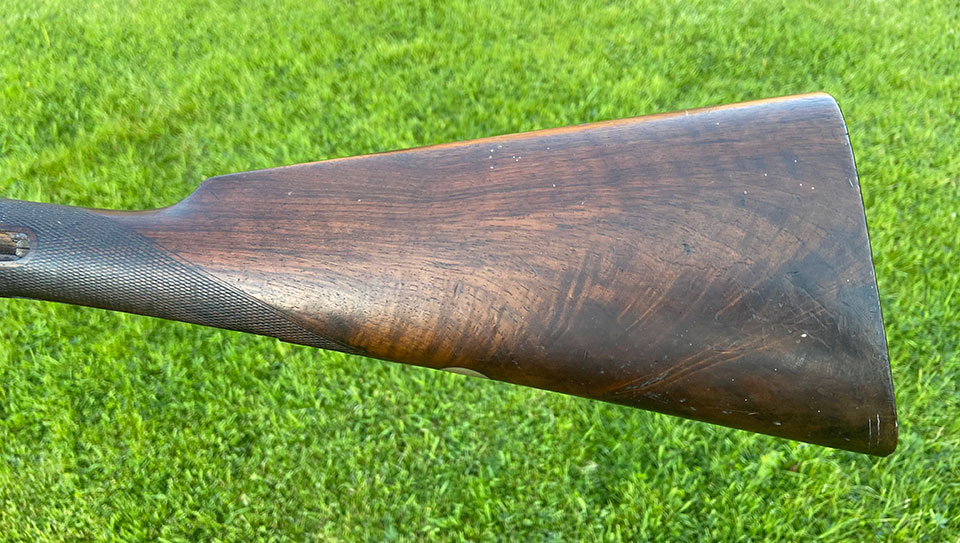
The record books show the gun was made in 1883. Grant records of orders are rarely verbose. These simply read: “ B/L, C/F, 12-B, 30” T.L”. Meaning: Breech-loading, centre-fire, 12-bore, 30” barrels, top-lever. It was ordered by a Mr. G.F. Bainbridge and delivered on July 24th 1883.
A further note revealed that it was in the possession of a Mr. A.J.H. Ware and was submitted for nitro proof, successfully, in 1954. The letters engraved in the brass escutcheon on the oil-blackened leather case read ’G.F.B’, so it is original to the gun.
The other gun was less dramatic, but revealed itself to be in good mechanical order and not much worn. Like many rook-rifles, it had been converted to .410 when rook rifle ammunition ceased to be commercially produced; probably in the 1950s or’60s. The barrel had been shortened and turned on a lathe from octagonal and heavy to round and light.
It is of lever-cocking, side-lever hammerless type and has a shapely pistol-grip stock and an action that is nicely engraved and retains quite a lot of original case colour. Internally, the bore is good and it really just needs a good clean. It will never be valuable but it is quite fun and was originally a very good quality rifle, with a proper Lang serial number, not a cheap, badge-engineered’ buy-in.
The Grant needs a lot of work to bring it back to life. I have a pair of Grant back-locks from a slightly earlier (scrap) gun. The hammers on those locks might just be engineered to fit. If not, it means a very careful welding job to re-attach some steel, which can then be filed into correctly-shaped spurs, chequered, engraved and hardened.
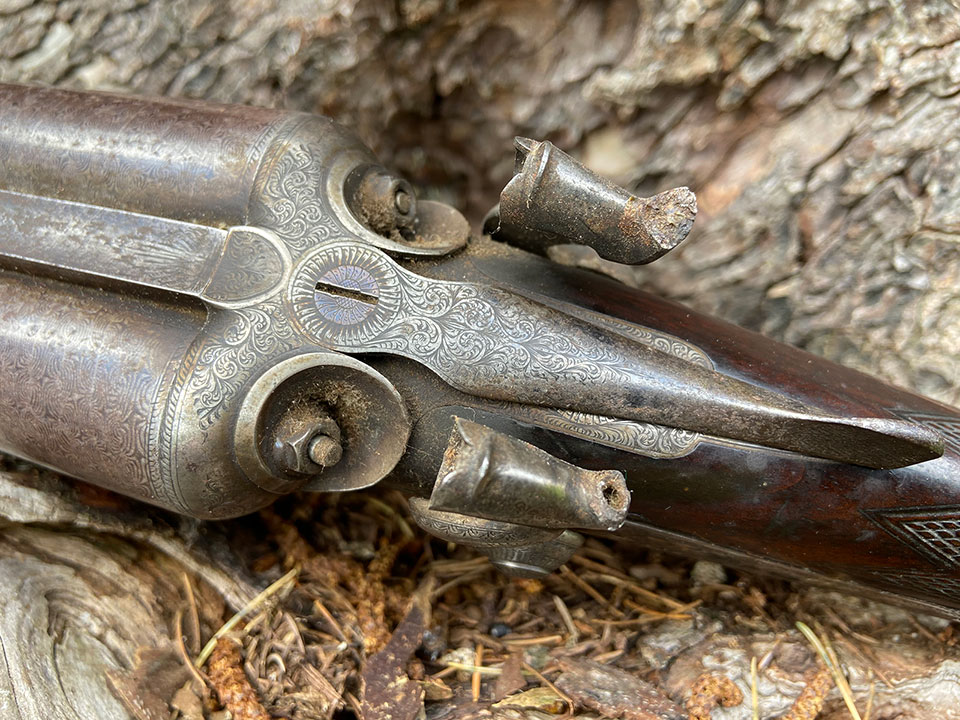
That is quite a few man-hours. The men involved are very skilled and experienced and, therefore, not inexpensive to employ. However, either a job like that is done perfectly or it will look wrong and the gun will never satisfy a critical eye.
I like a challenge and bringing back to life guns that were written off as hopeless for years is very satisfying. I predict the Grant will be busting clays before the end of the summer and the Lang & Son will become a pretty thing to own and a useful little garden gun.
A deal was done for a modest sum and work will commence next week.
Published by Vintage Guns Ltd on




